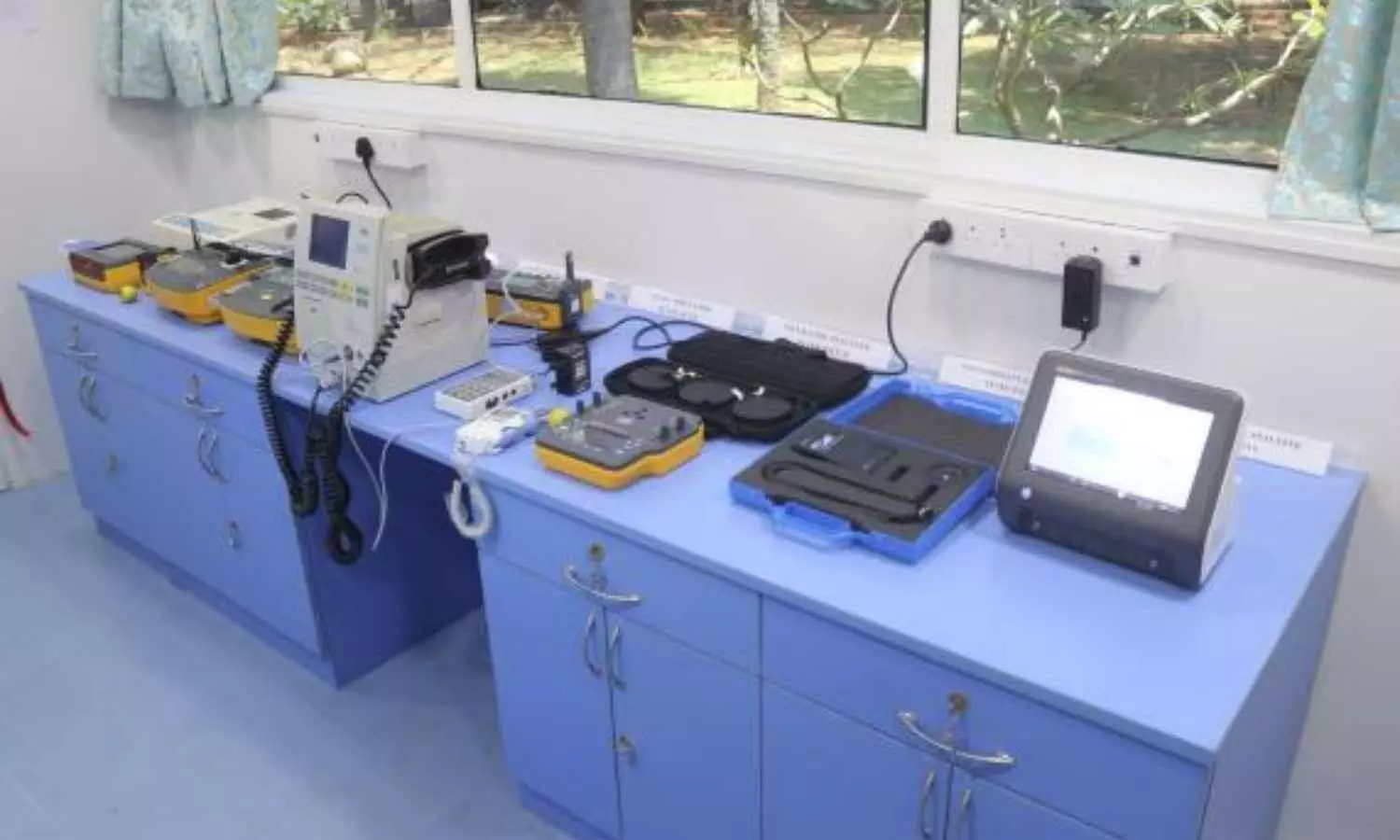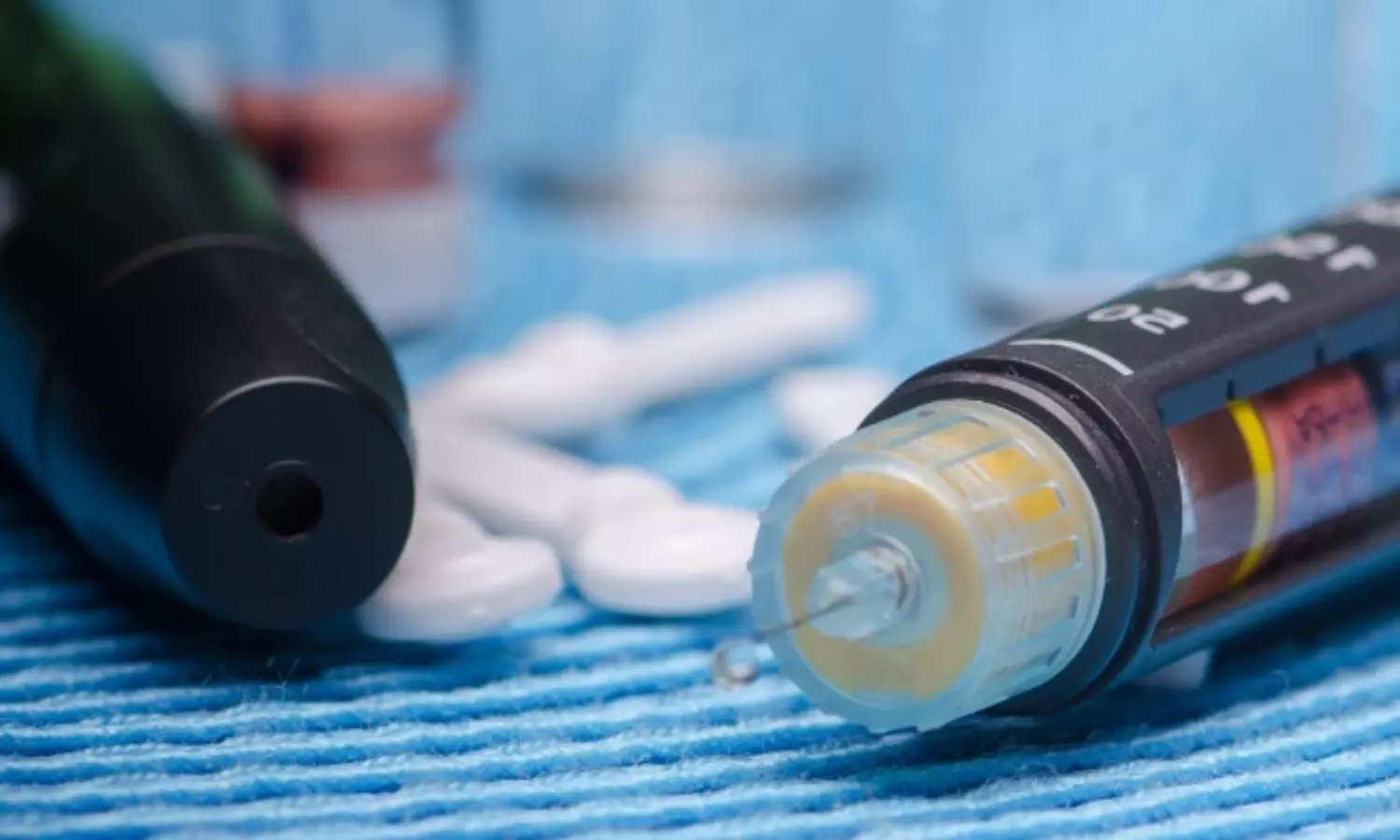Can animals count? Neuroscientists identify a sense of numeracy among rodents
Powered by WPeMatico
Powered by WPeMatico
Powered by WPeMatico
Powered by WPeMatico
Powered by WPeMatico
Powered by WPeMatico

Pune: The authorities of B J Medical College (BJMC) and Sassoon General Hospital (SGH) have initiated a probe into the ragging complaint filed by a 24-year-old junior resident doctor.
According to a recent report by HT, officials were informed about the incident after the Junior Resident Doctor, studying in her first year of Doctor of Medicine course in Anaesthesia, complained to the college administration in this regard. As per her complaint, she was allegedly ragged and bullied by seniors while working in the department.
Taking note of her complaint, the BJMC authorities initiated a probe into the incident. Officials have informed the Daily that the matter is being probed by the post-graduate (PG) grievance redressal committee, which will submit a report in this regard.
Commenting on the development, the PG Dean of BJMC, Dr. Shekhar Pradhan informed Hindustan Times that the committee has been constituted to investigate the complaint. He added, “The complaint was received last week and such issues are handled seriously. The complainant said she was harassed and ragged while working in the department. The entire investigation will be headed by the PG redressal committee.”
The PG Dean further informed that the panel in charge of investigating the matter has started to record the statements of junior and senior students. Apart from the students, the committee will also record the statements of the students accused of ragging. Action against the accused doctors will be taken only after considering the report submitted by the committee.
“We are also recording the statements and responses of the faculty members and senior faculties to verify the facts of the complaint. The action will be taken after the report is submitted by the committee,” Dr. Pradhan said.
An incident of harassment of female resident doctors was reported last year on December 31, 2023. Back then, some of the PG students at the male residents’ hostel consumed alcohol, went to the resident hostel for the females and created chaos. After the drunk doctors smashed a window of the female hostel resulting in panic, two female residents lodged a complaint to the college administration.
The Deputy Chief Minister Ajit Pawar also took cognizance of the matter and slammed the college and hospital administration for the liquor party and the chaos that took place on the premises on the occasion of New Year’s Eve. However, HT adds that no action was taken by the college authorities in this regard.
Aiming to prevent ragging in medical colleges across India, the National Medical Commission (NMC) had earlier spelt out the regulations titled “Prevention and Prohibition of Ragging in Medical Colleges and Institutions Regulations, 2021”. It also specified the disciplinary actions to be taken while dealing with incidents of ragging.
NMC, the apex medical education regulatory body mentioned the measures to prohibit and prevent ragging by institutions including the duties and responsibilities of the institutes, measures required to be taken by the medical colleges, issue of migration, transfer or conduct certificates, measures to encourage healthy interaction between freshers and seniors, Sensitisation of institutional employees and staff towards ragging, Institutional committees and related measures, Anti-ragging squad, Student Affairs or Hostel Committee, duties of the universities, etc.
Also Read: NMC Regulations spell out Disciplinary Action for Ragging in Medical Colleges
Powered by WPeMatico

Chennai: Indian Institute of Technology Madras (IIT Madras) has launched India’s First ‘medical devices calibration facility on wheels’. This has been developed by IIT Madras under its ‘Anaivarukkum IITM’ (IITM for all) Initiatives.
Prof. V. Kamakoti, Director, IIT Madras, launched this facility at the campus on 15th April 2024 in the presence of Prof. R. Sarathi, Dean (Planning), Prof. M. Anbarasu (Head, CEC), Prof. S. Ramakrishnan, faculty and students.
Highlighting the importance of this initiative, Prof. V. Kamakoti, Director, IIT Madras, “Proper Diagnosis and treatment are extremely important and for that the medical devices need to be calibrated accurately and frequently.
Also Read: IIT Madras, THSTI Faridabad develop AI model to determine foetus age
With escalating cost for calibration this effort not only reduces the cost of calibration but also the transportation cost and time required. This is a progressive step towards affordable, scalable, quality health care for all.”
Maintenance and quality assurance of life-saving medical devices are of paramount importance for healthcare delivery. Calibration is crucial as it ensures the accuracy of medical instruments for precise disease diagnosis and effectiveness. This facility is first-of-its-kind in India and is geared towards providing an affordable quality calibration facility and enabling accurate disease diagnosis and treatment.
This mobile facility will ensure pervasive quality healthcare irrespective of geographical locations across the country. This will help to test and maintain medical devices that are used in wide range of hospitals including those in villages at their doorsteps.
This initiative boosts the United National Sustainable Development Goal 3, which calls for Health and well-being for all.
The infrastructure available in this mobile unit include state-of-the-art equipment to test the safety of medical devices and their functionalities as per international standards.
Powered by WPeMatico

A recent study published in the Journal of American Medical Association discovered that managing cholesterol levels from childhood could significantly reduce the risk of cardiovascular disease (CVD) in adulthood. The study spanned through several decades and followed participants from childhood through to their 40s to assess how variations in non-high-density lipoprotein cholesterol (non–HDL-C) levels affect the incidence of heart disease later in life.
Non-HDL-C is a critical measure of cholesterol that encompasses all harmful types of blood lipids and it has been identified as a reliable marker for predicting cardiovascular risks in adults. This extensive research was conducted across six prospective cohorts in the US and Finland to analyze data from individuals who were initially examined as children, starting from 1970 to 1996 with the follow-ups that continued until 2019.
The cohort of this study consisted of 5,121 participants with a balanced demographic representation including 60% women and 15% Black participants. This research tracked the non-HDL-C levels of participants from an average starting age of 10.7 years into their mid-adulthood by classifying the levels according to age- and sex-specific z-scores and existing clinical guidelines for dyslipidemia.
Over an average follow-up period of 8.9 years when the participants reached 40 years of age, 147 CVD events were observed. The analysis showed a strong association between both childhood and adult non-HDL-C levels and the elevated risk of CVD, with a more pronounced risk noted in the individuals with high non-HDL-C levels that persisted into adulthood. The hazard ratios (HR) were significantly high for individuals with sustained high non-HDL-C levels from childhood through to adulthood by indicating a fivefold increase in the risk of CVD events when compared to the individuals whose levels remained within the recommended range.
This study also found that individuals who managed to bring their non-HDL-C levels back to within the recommended range by adulthood did not face a significantly increased risk of heart disease which demonstrated similar risk levels to the individuals who never had dyslipidemia.
They suggest that interventions reduce elevated non-HDL-C levels in children could play a critical role to prevent the development of cardiovascular diseases later in life. Overall, the findings emphasize the importance of regular cholesterol monitoring from early childhood and continuing through adulthood along with lifestyle adjustments and medical interventions as required.
Source:
Wu, F., Jacobs, D. R., Jr, Daniels, S. R., Kähönen, M., Woo, J. G., Sinaiko, A. R., Viikari, J. S. A., Bazzano, L. A., Steinberger, J., Urbina, E. M., Venn, A. J., Raitakari, O. T., Dwyer, T., Juonala, M., & Magnussen, C. G. (2024). Non–High-Density Lipoprotein Cholesterol Levels From Childhood to Adulthood and Cardiovascular Disease Events. In JAMA. American Medical Association (AMA). https://doi.org/10.1001/jama.2024.4819
Powered by WPeMatico

Mexico: SITA-PLUS hospital trial published in the Journal of Diabetes and its Complications has shed light on the safety and efficacy of sitagliptin with basal-plus (BP) insulin regimen versus insulin alone in non-critically hospitalized patients with type 2 diabetes (T2D).
The study revealed that the sitagliptin and BP regimen combination is safe and more effective than insulin therapy alone for inpatients with type 2 diabetes and hyperglycemia.
“Combining sitagliptin with a basal-plus insulin regimen leads to a comparable risk of hypoglycemia, lower daily blood glucose levels, and lower insulin doses than the basal-plus regimen alone,” the researchers reported.
The recommended method for insulin administration is a basal-bolus regimen, which involves the daily subcutaneous injection of basal insulin, along with rapid-acting insulin before meals for prandial and correctional doses. However, its application is limited by the complexity of this approach and the risk of hypoglycemia.
Previous studies have revealed that basal and correctional insulin doses (basal-plus regimen) with sitagliptin are similar to the basal-bolus insulin regimen in hyperglycemia management in a hospital setting. However, no clarity exists on whether this combination is better than a basal-plus regimen alone. Therefore, Abraham Edgar Gracia-Ramos, Instituto Mexicano del Seguro Social, Mexico City, Mexico, and colleagues aimed to compare the safety and efficacy of basal-plus insulin regimen with or without sitagliptin in non-critically ill patients with type 2 diabetes.
For this purpose, the researchers conducted an open-label, randomized clinical trial comprising patients with a previous diagnosis of T2D and blood glucose (BG) between 180 and 400 mg/dL. Participants received basal and correctional insulin doses (BP regimen) either with or without sitagliptin. The study’s primary outcome was the difference in the mean daily blood glucose among the groups. Seventy-six patients (mean age 60 years, 64 % men) were randomized.
Based on the study, the researchers reported the following findings:
“These results are significant because using DPP-4 inhibitors with basal-plus insulin therapy simplifies hospital diabetes management for healthcare professionals, improves treatment adherence, and leads to better patient outcomes,” the researchers wrote.
Reference:
Gracia-Ramos, A. E., Cruz-Dominguez, M. D. P., Madrigal-Santillán, E. O., Rojas-Martínez, R., Morales-González, J. A., Morales-González, Á., Hernández-Espinoza, M., Vargas-Peñafiel, J., & Tapia-González, M. D. L. Á. (2024). Efficacy and safety of sitagliptin with basal-plus insulin regimen versus insulin alone in non-critically ill hospitalized patients with type 2 diabetes: SITA-PLUS hospital trial. Journal of Diabetes and its Complications, 38(5), 108742. https://doi.org/10.1016/j.jdiacomp.2024.108742
Powered by WPeMatico

India: A recent in vivo study published in Frontiers in Nutrition has shed light on the effect of quinoa (Chenopodium quinoa W.) flour supplementation in breads on the lipid profile and glycemic index (GI).
The study showed that quinoa-incorporated bread possessed a low glycemic index (42.00 ± 0.83) compared to the control (69.20 ± 1.84) and long-term consumption proved to contain functional efficacies, in terms of hypolipidemic effect.
“Incorporating quinoa into bread formulations not only enhances their nutritional content but also offers potential health benefits, particularly in managing cardiovascular health and blood sugar levels,” the researchers wrote. The findings highlight the positive effects of quinoa flour supplementation in bread on lipid profile and glycemic index.
Quinoa has recently gained significant popularity as a nutritious and versatile grain alternative. Beyond its use as a standalone dish, researchers have been exploring its potential as a functional ingredient in various food products. One such avenue of investigation is its incorporation into bread, a staple food consumed worldwide.
Quinoa (Chenopodium quinoa W.) is a pseudo-cereal rich in protein, vitamins, dietary fiber, and minerals. Its nutritional profile makes it an attractive candidate for improving the health properties of baked goods like bread.
Against the above background, Natasha R. Marak, Central Agricultural University, Tura, Meghalaya, India, and colleagues aimed to investigate the effects of quinoa bread on physical, chemical, and bioactive components, glycaemic index, and biochemical parameters.
For this purpose, the researchers fed human subjects aged between 20 and 50 years with the absence of morbid factors daily with quinoa bread for 3 months to study its pre-and post-treatment effects on lipid profile, glycosylated hemoglobin, and blood glucose.
The effort was made to incorporate the maximum amount of quinoa into the bread without compromising the bread’s acceptability. Of the 14 formulations, TQ13, containing 20% quinoa flour with 3% wheat bran, was selected for further analysis.
Based on the study, the researchers reported the following findings:
According to the study, these benefits have proved crucial in the dietary treatment of diabetes mellitus by resulting in improved glycaemic control and several metabolic parameters, such as improved blood lipid levels.
Based on the data obtained in the study, the researchers concluded that quinoa incorporation into wheat bread results in essential health benefits.
High consumption of phenolic compounds has long been associated with reduced risk of cardiovascular diseases and certain cancers. “Current trends in the enhancement of the antioxidant capacity of wheat bread by quinoa flour addition rich in phenolic compounds might be beneficial in the health status of a population,” the researchers concluded. “The results obtained in the present study corroborate the data reported in the literature, indicating that quinoa bread can be used in glycemic control and plasma lipids.”
Reference:
Marak, N. R., Das, P., Das Purkayastha, M., & Baruah, L. D. (2024). Effect of quinoa (Chenopodium quinoa W.) flour supplementation in breads on the lipid profile and glycemic index: An in vivo study. Frontiers in Nutrition, 11, 1341539. https://doi.org/10.3389/fnut.2024.1341539
Powered by WPeMatico
